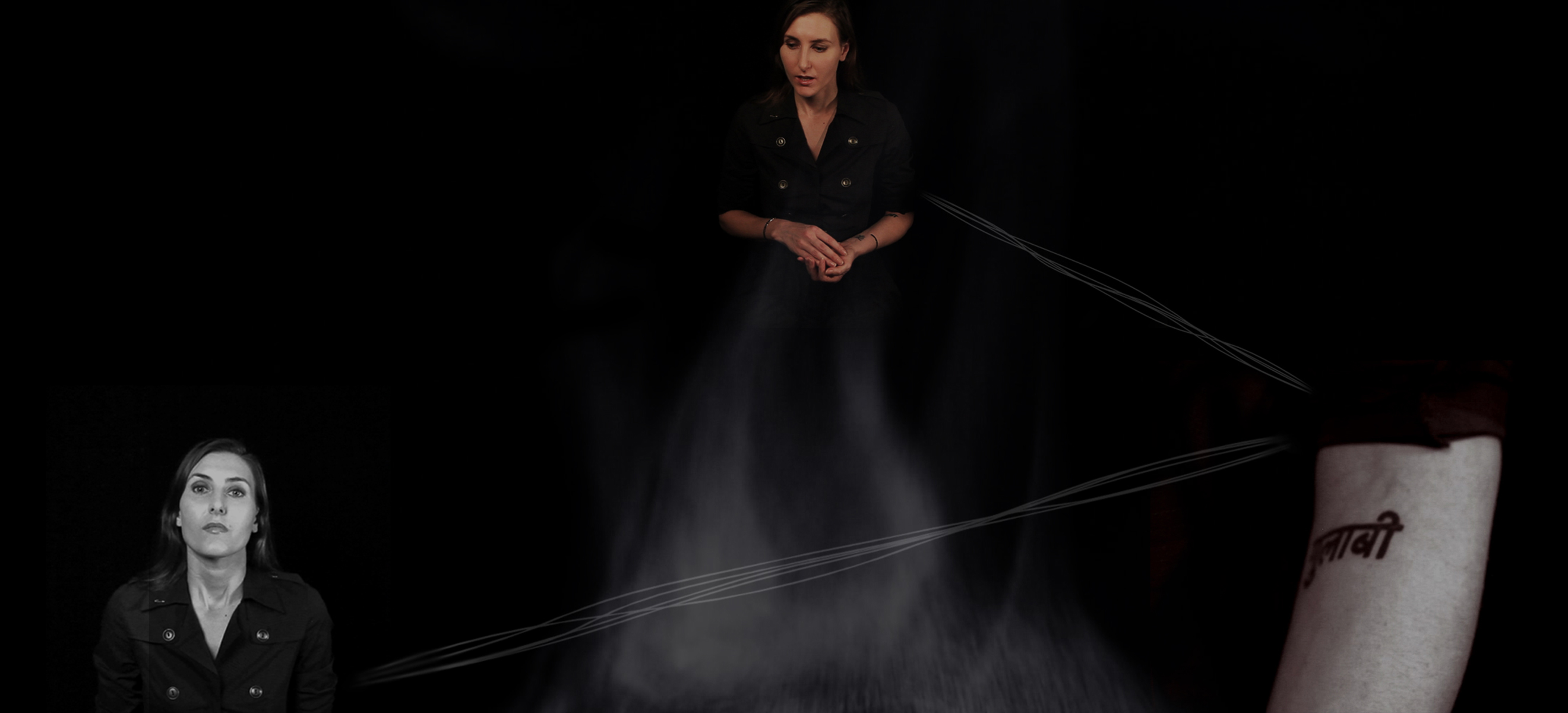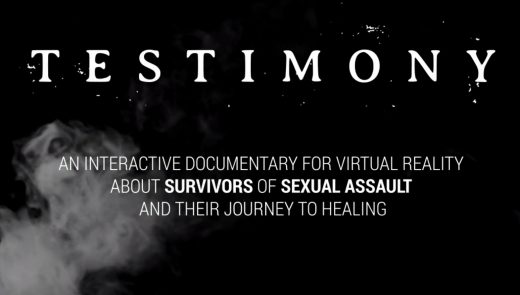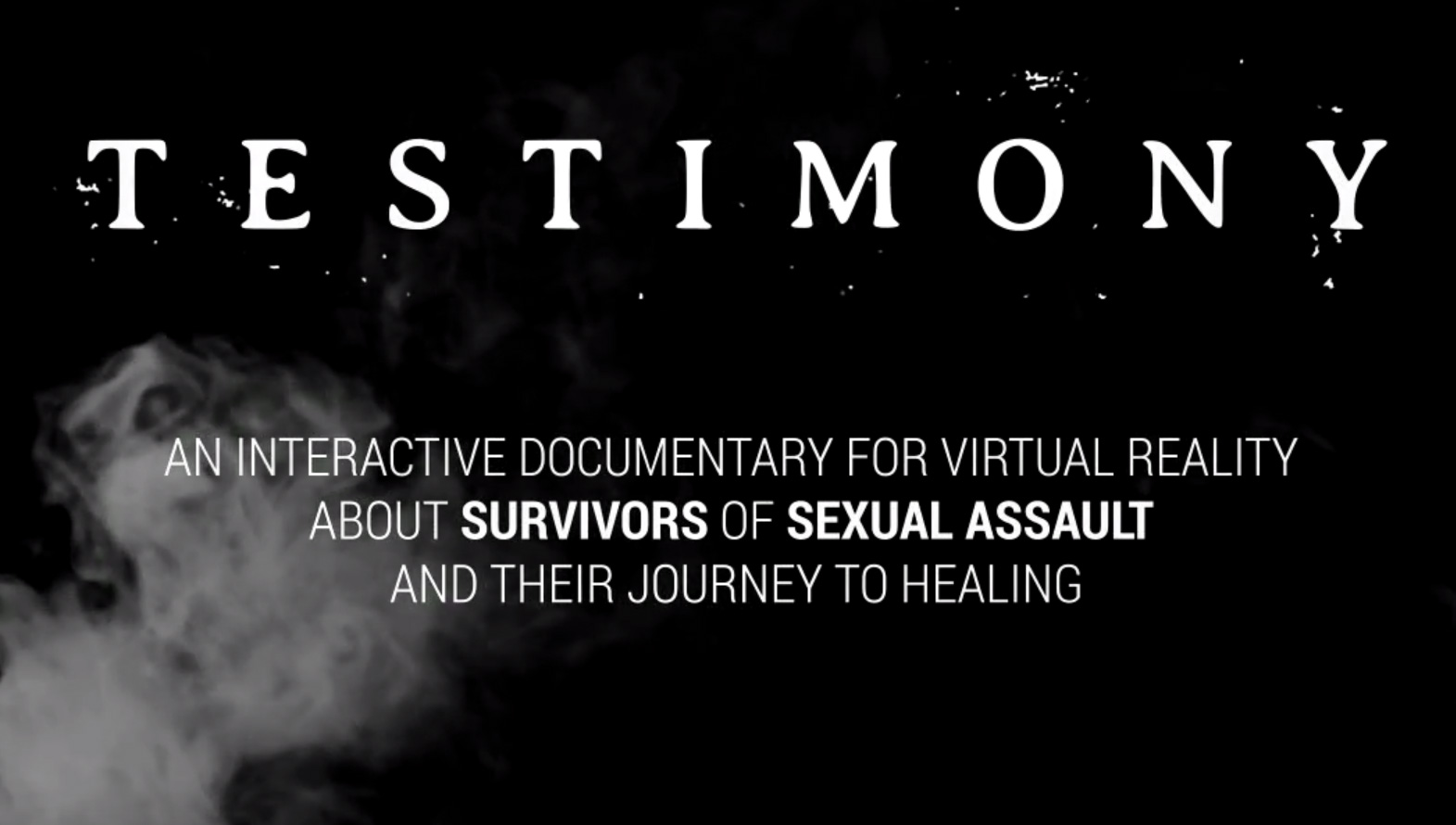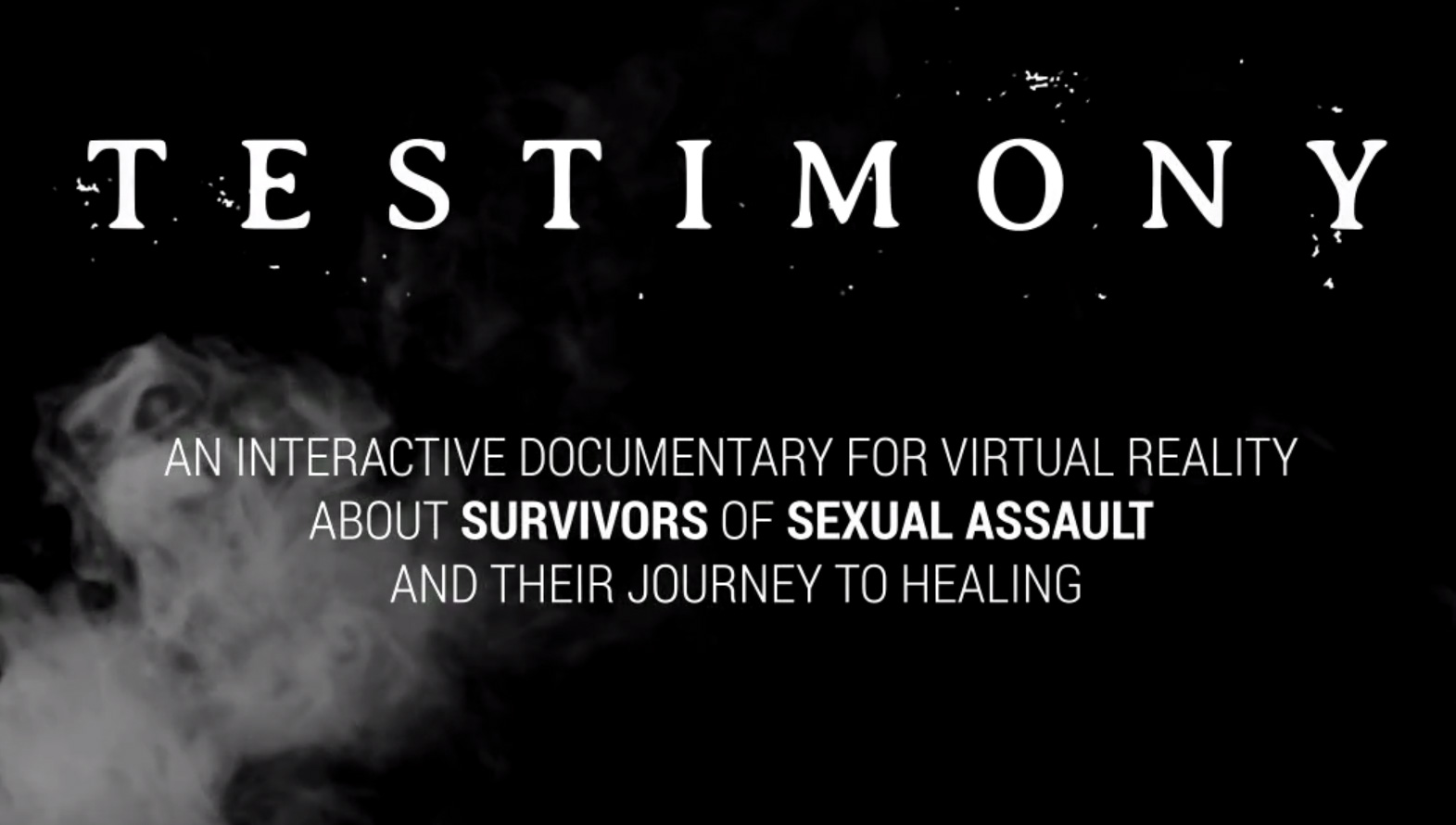I sat in on a virtual support group for sexual assault survivors
Thanks to its ability to give you a first-person point of view, virtual reality has become a common vehicle for empathetic storytelling. Testimony, a VR project that premiered at Tribeca 2017, does so by putting you in a virtual support group, showing the effectiveness of simply watching people tell their stories, especially when the subject is as disturbing as sexual assault.
With a Gear VR headset and headphones, I listened to a series of accounts from sexual assault survivors, who started to talk only when I looked at them. Their stories were cut into sections and told chronologically. Each person stopped talking when I looked away. In the virtual environment, you’ll see the survivors’ heads laid out on a web-like map. Each individual’s account consists of four or five sections tied to each other with a thin line so you know where they begin and end. You can start at any part of an individual’s timeline.

Testimony isn’t a VR “experience.” It’s not designed to transport you to the scene of a crime or force you to watch, horrified, as someone is attacked. Instead, it lets sexual assault survivors tell their stories in their own words, which is far more powerful than a reenactment. The accounts are straightforward and don’t go into explicit detail. When your brain is forced to fill in the gaps left by the unspoken words, your sense of empathy is perhaps stronger than if you had simply watched the episode unfold.
Then there is the sheer power of witnessing a survivor struggle with her emotions while revisiting her trauma. I know some survivors of sexual assault — they are all strong and inspirational people. But even the most resilient of them have, in my experience, shied away from detailing what happened to them. It is rare to hear a survivor’s story told so vulnerably, and for anyone dealing with similar pain, Testimony provides a support-group-like environment where they can find strength and solace in the privacy of their home.

Testimony’s greatest strength lies in its focus on each individual’s journey after their assaults. When I heard that it took a year for one survivor to hear back from the police about her gang rape and that all the officer had to say at that time was that they would “give the ringleader a call” — a year later — I felt outraged. And this theme of being failed by the legal system runs through all the accounts. As I jumped from person to person, the sense of injustice at how they were let down by law enforcement is pervasive.
To be fair, Testimony doesn’t offer a chance for police officials to weigh in, and as such it has an inherent bias. As a journalist, my instinct is to seek the comment from a representative for the legal system is, so we can hear both sides of the story. But that would ultimately distract from what is essentially an incredibly personal encounter with these survivors.
Testimony presents a diverse collection of accounts from men and women that are impossible to ignore. Its focus on the individual survivors, delivered in a stark, relatively distraction-free environment, puts the spotlight on an issue that sorely needs it. Project creator Zohar Kfir, herself a survivor of sexual assault, plans to launch a web platform in June to allow others to come forward and share their stories. She told Engadget that access to VR is still very limited and that expanding the project through the internet can help them reach more people. Her team is also working with anti-sexual-assault organization RAINN to bring Testimony to more survivors. Ultimately, though, the goal is to draw attention to the failings of the legal system and to try to ensure nobody else suffers the indignity of being ignored.
As the project gains momentum, the combined voices of sexual-assault survivors who feel let down by the legal system may eventually grow loud enough that authorities will be forced to listen.
(21)





